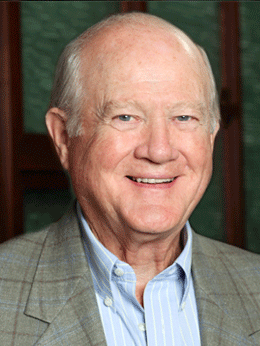The new year brings lofty ambitions to improve on last year’s results.
But don’t set the bar too high.
In more than 30 years of helping companies improve their performance, I’ve found two interesting contradictions: Stretch goals often sap motivation, while smaller goals bring greater improvement.
Why these counterintuitive findings?
Stretch goals are based on misconceptions that managers have to compel their people to perform their best and that employees must be challenged constantly to live up to their potential.
In fact, behavioral research shows the best way to motivate employees is to positively reinforce not only goal achievement but also actions along the way. In addition, more frequent reinforcement accelerates improvement. Thus, smaller targets, coupled with more frequent reinforcement, goes further than fewer, bigger goals.
The key problem with stretch goals is most are attainable only a small percentage of the time. Why would anyone set such a goal? No wonder disappointment occurs.
Want to do better this year? Here are seven tips for more productive goal setting:
- Set a series of mini-goals instead of stretch goals. Break annual targets into smaller ones to make them easier to reach. Rather than dividing the year-end target by 12, start smaller and build as you go because progress will accelerate during the year. For instance, to meet an annual goal of increasing sales by $12 million, set a January target of less than $1 million.
- Set goals at the level where the probability of success is close to 100%. While this seems too easy, it creates many opportunities for success and, therefore, occasions for recognition and rewards. Remember that positive reinforcement accelerates behavior.
- Define clear, actionable behaviors. When behaviors that are needed to accomplish the goal are precise (pinpointed), it is easy to see who is working on the right things. When those behaviors are recognized, they will accelerate.
- Reinforce every little bit of progress. Support specific, measurable goals with frequent feedback and positive reinforcement to shape behavior. Track and recognize improvements daily, weekly and monthly. Aubrey Daniels International has found that ongoing, effective reinforcement can cause performance improvements to double or even triple. For example, a Dollar General distribution center manager set a goal of decreasing lost cartons from an average of 550 per week to 165 per week within seven weeks. Thanks to clear goals and frequent reinforcement, employees reduced the number to 85 in the very first week.
- Give employees a role in setting their goals. Don’t just tell. Ask your team members to participate. This will encourage them to own their results. For insight on how Capt. David Marquet of the U.S. Navy used this approach, read Turn the Ship Around!
- Don’t reinforce performance that misses goals. Doing so conveys that the targets aren’t important. If goals prove to be too high, reset them and acknowledge the miscalculation.
- Celebrate accomplishments. Publicly recognize every time a mini-goal is reached. The more reinforcement, the more likely the desired behavior will be repeated and long-term goals will be fulfilled. Make the celebration relive the accomplishment. Have employees tell how it was done.
Also, when it comes to your personal goal setting, follow the Premack Principle – another counterintuitive guideline. Complete a less-preferred task before one you like better. More than 40 years of research show this tactic will boost your productivity and satisfaction.
Following this advice will go a long way toward lifting your business to new heights in 2015.
For additional information, see this podcast.
—
Aubrey Daniels, Ph.D., is founder of management consultancy Aubrey Daniels International, as well as author of Oops! 13 Management Practices That Waste Time and Money and five other best-selling business books. He may be reached at [email protected].


















































 |
|